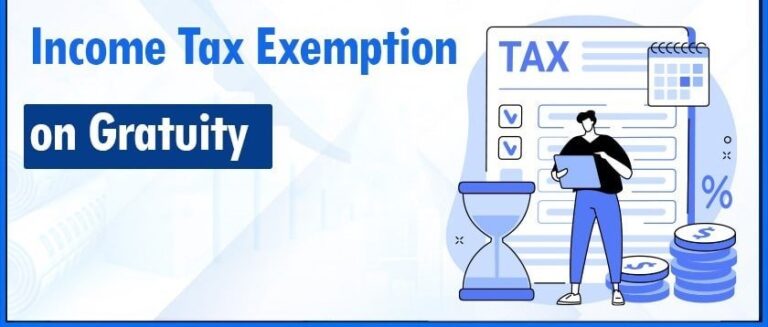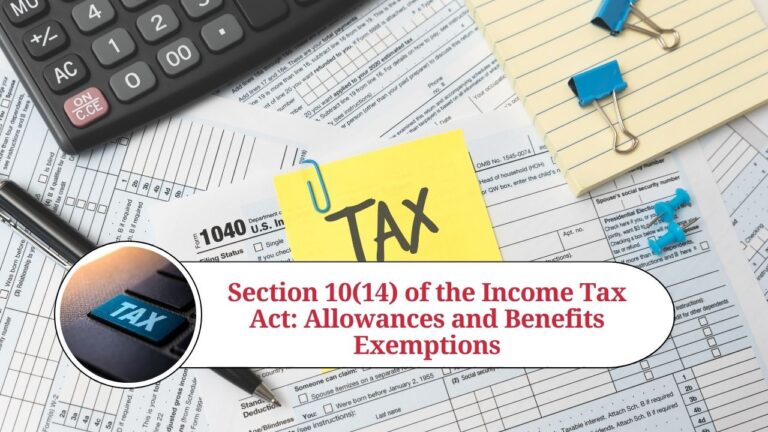Understanding Tax Exemptions on Provident Funds and Pension Schemes Under Section 10 of the Income Tax Act
Introduction
When it comes to saving for the future, provident funds and pension schemes are popular choices among employees in India. These savings schemes not only provide financial security but also come with significant tax benefits. Section 10 of the Income Tax Act, 1961, outlines the tax exemptions available on the accumulated balance of recognized provident funds and payments from pension schemes. In this blog, we will delve into the specific provisions under Section 10, focusing on the exemptions provided and the conditions attached to them.
Section 10(12): Exemption on Recognized Provident Funds
Under Section 10(12) of the Income Tax Act, the accumulated balance due and payable to an employee participating in a recognized provident fund is exempt from tax, subject to the conditions provided in Rule 8 of Part A of the Fourth Schedule.
However, there are some provisos to this exemption
Interest Accrued:
The exemption does not apply to the interest accrued during the previous year on the contributions exceeding ₹2,50,000 made by the employee in any previous year, starting from April 1, 2021.
No Employer Contribution:
- If the provident fund does not include contributions from the employer, the exemption limit for interest accrued is increased to ₹5,00,000.
For more details on tax exemptions for recognized provident funds, visit Smart Tax Saver our detailed guide on provident fund taxation.
Section 10(12A): Payments from National Pension System Trust
Section 10(12A) provides tax exemption on any payment from the National Pension System (NPS) Trust to an assessee upon closure of the account or opting out of the pension scheme. The exemption is applicable to 60% of the total amount payable at the time of such closure or opting out.
Learn more about the tax benefits of the National Pension System.
Section 10(12B): Partial Withdrawal from NPS
Section 10(12B) exempts any partial withdrawal made from the NPS account in accordance with the terms specified under the Pension Fund Regulatory and Development Authority Act, 2013. The exemption is limited to 25% of the contributions made by the employee.

Section 10(12C): Payments from Agniveer Corpus Fund
Introduced recently, Section 10(12C) exempts any payment from the Agniveer Corpus Fund to a person enrolled under the Agnipath Scheme or to their nominee. The terms “Agniveer Corpus Fund” and “Agnipath Scheme” are defined in Section 80CCH.
How to Check Your Provident Fund Balance
Given the importance of staying updated with your provident fund balance, here’s a quick guide on how you can check your EPF balance:
EPF Portal:
Visit the EPFO portal and use your Universal Account Number (UAN) and password to log in. You can view your passbook to check the balance.
UMANG App:
Download the UMANG app, register using your mobile number, and link your UAN to check your balance.
SMS Service:
Send an SMS to 7738299899 with the message “EPFOHO UAN ENG” to receive your balance details.
For step-by-step instructions, visit our guide on checking PF balance.
How to Claim Your Provident Fund
Claiming your provident fund can be done online through the EPFO portal:
Login:
Log in to the EPFO portal using your UAN and password.
Online Services:
Navigate to ‘Online Services’ and select ‘Claim (Form-31, 19 & 10C)’.
Verify Details:
Verify your details and submit your claim.
Frequently Asked Questions (FAQ)
Q1: How much of the NPS corpus is exempt from tax upon withdrawal?
A1: Upon withdrawal, 60% of the NPS corpus is exempt from tax.
Q2: Are partial withdrawals from NPS taxable?
A2: Partial withdrawals from NPS up to 25% of the employee’s contributions are exempt from tax.
Q3: What is the Agniveer Corpus Fund?
A3: The Agniveer Corpus Fund is a fund for individuals enrolled under the Agnipath Scheme, providing tax exemptions for specific payments.
Q4: How can I check my EPF balance?
A4: You can check your EPF balance via the EPFO portal, UMANG app, or SMS service. Visit our guide on checking PF balance for more details.
Q5: How do I claim my provident fund online?
A5: You can claim your provident fund online through the EPFO portal by logging in with your UAN and following the steps outlined in our guide on claiming PF online.
Conclusion
Understanding the tax exemptions available under Section 10 of the Income Tax Act can help you maximize your savings from provident funds and pension schemes. Whether it’s the EPF, NPS, or the Agniveer Corpus Fund, these provisions ensure that your savings are not only secure but also tax-efficient. Stay informed and take full advantage of these benefits to plan a financially secure future.
For more detailed information and expert advice on tax exemptions, visit Smart Tax Saver – your go-to resource for all things tax-saving and investment planning.2




